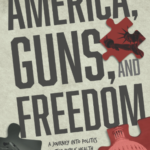Federally Funded Civics?
How many Americans know that one K-12 civics textbook is directly subsidized by our tax dollars? Because of the government subsidy, schools can buy this textbook (high school version) for $10 a copy—about one-fifth the cost of competitor’s textbooks. The book is called We the People: The Citizen and the Constitution and is written and published by the Center for Civic Education (CCE). There are three different editions—grade school, middle school and high school.
This book was first funded in 1994 by HR6, the spending bill that was part of the Goals 2000, School-to-Work package. This textbook was re-authorized and again funded in No Child Left Behind in 2002. For one textbook to be specifically authorized and funded by federal law raises obvious question about insider/special interest politics. Because of its low price, the textbook is widely used in United States ‘ schools.
The textbook is as radical as it is cheap. For example, the high school version describes our Bill of Rights as follows:
The reaction of most people to the Bill of Rights was lukewarm at best. Its passage had little effect on the average person….The Anti-Federalists, who had based much of their opposition to the Constitution on the lack of a bill of rights, were unhappy with its passage. They thought it spoiled their chances to rewrite the Constitution. They said the amendments were ” good for nothing.” “I believe,” said Senator William Grayson of Virginia, “as many others do, they will do more harm than good.” At the same time, Federalists were angry with Madison for pushing the Bill of Rights through Congress. At best, they considered it of little importance. Even Madison, tired of all the disagreement and dissent, had come to think of the whole experience as a “nauseous project.” [p. 100]
While the facts are not totally wrong, they are distorted, totally removed from context and presented in an improperly sophomoric and negative tone.
More significant is the interpretation the textbook gives to the foundation principles of our nation as contained in the Declaration of Independence and Constitution. The textbook says:
As fundamental and lasting as its guarantees have been [past tense], the U.S. Bill of Rights is a document of the eighteenth century, reflecting the issues and concerns of the age in which it was written…. Other national guarantees of rights also reflect the cultures that created them. Many of these cultures have values and priorities different from our own.” [p. 207]
In other words, our basic and inalienable rights are viewed as mere cultural constructs (postmodernism) that do not apply to all people generally. Genuine rights disappear under this analysis. In contrast to the way our Bill of Rights is pictured in this textbook, the Universal Declaration of Human Rights is described as follows:
The social, economic, and solidarity rights included in the United Nations’ Universal Declaration of Human Rights… express the objectives worthy of any just society. [p. 208]
That is, the UN statement of human rights is pictured by the textbook as being superior to our own Bill of Rights because the UN document is supposedly universal in application. The textbook never points out the true nature of the UN’s statement of human rights, of course, which is, “These rights and freedoms may in no case be exercised contrary to the purposes and principles of the United Nations.” [Universal Declaration of Human Rights, P. 29, Art. 3] That is, the UN’s statement of human rights denies that rights are inalienable. Human rights are seen as being subject to government policies—in this case the policies of the United Nations. This UN view of human rights is the same view that has always been embraced by communist countries. The constitution of Castro’s Cuba, for instance, states that Cubans have freedom of speech—as long as their speech conforms to governmental polices. There are no genuine human rights under the communist—or United Nations—view of rights.
The textbook ends by emphasizing the importance of “Returning to Fundamental Principles.” And how is that defined? The textbook says:
It is doubtful that these Founders had in mind an uncritical acceptance of the “wisdom of the past.” In revisiting these principles, each generation must examine and evaluate them anew. Indeed, it is probable that the Founders would be somewhat surprised at the reverence in which they and their writings have been held by subsequent generations of Americans. The Founders, themselves, were vigorous critics of the wisdom they inherited… They would expect no less of you. [p. 214]
As can be seen, according to this textbook the fundamental principles of freedom are now up for grabs. And where does this textbook then take its students? The book ends by calling for the establishment of the “global village” where we will all be “world citizens” in their utopian state.
It is an outrage that an American government textbook this radical is authorized and funded by federal law. The textbook is actually the national standards for civics and government (also written by the CCE) in textbook form. The textbook and the national standards upon which it is based should be relegated to the trash heap of the other failed utopian dreams.
Allen Quist can be contacted at edwatch@lakes.com. More information is available at edwatch.org.



